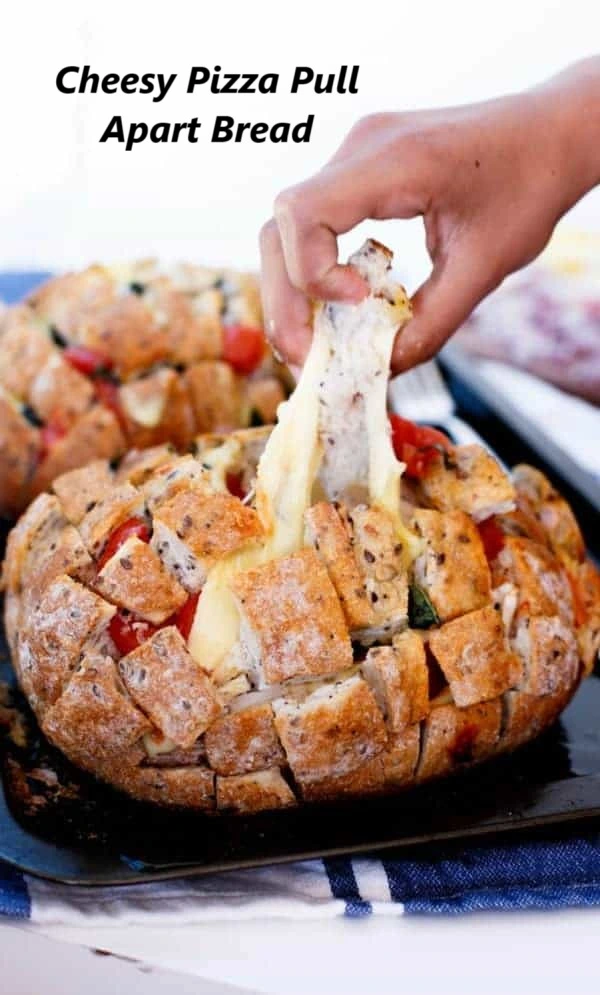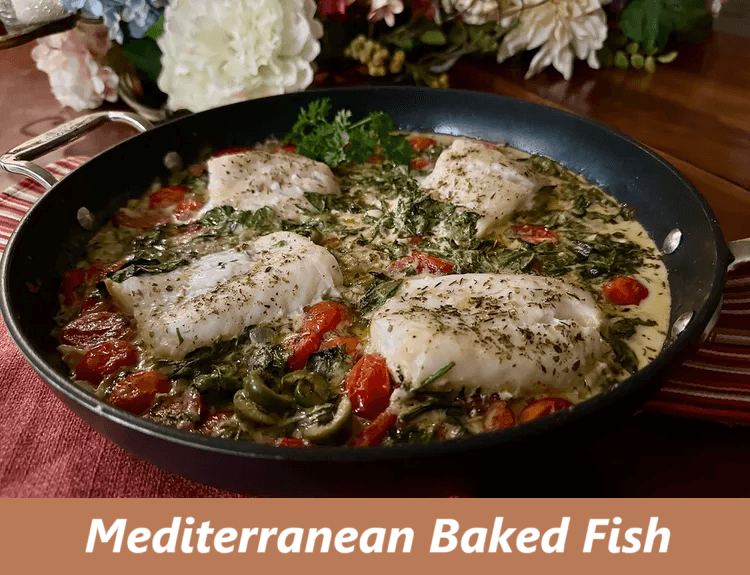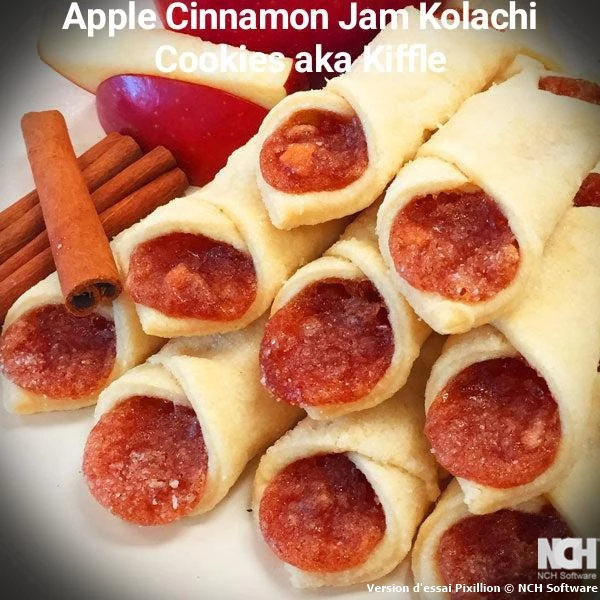Easy Thanksgiving Fruit Bread (Stollen-Inspired)
Table of Contents
Introduction
Did you know that traditional German stollen requires up to three weeks of preparation time, yet this Thanksgiving fruit bread delivers the same rich, festive flavors in just one day? This revelation challenges the common belief that exceptional holiday baking demands weeks of advance planning. Our Thanksgiving fruit bread recipe transforms the complex art of stollen-making into an accessible celebration centerpiece that busy families can master without sacrificing authentic taste or texture.
This Thanksgiving fruit bread combines the beloved elements of traditional German stollen with simplified techniques that accommodate modern holiday schedules. The result is a fragrant, fruit-studded bread that captures the essence of European holiday baking while honoring American Thanksgiving traditions. Whether you are hosting your first Thanksgiving or seeking to expand your holiday baking repertoire, this recipe provides the perfect bridge between tradition and innovation.
Ingredients List
Dough Foundation:
- 4 cups all-purpose flour (bread flour may be substituted for enhanced structure)
- 1/2 cup granulated sugar (coconut sugar works as a natural alternative)
- 1 teaspoon fine sea salt
- 1 packet (2 1/4 teaspoons) active dry yeast
- 1 cup whole milk, warmed to 110°F (non-dairy milk alternatives work effectively)
- 1/2 cup unsalted butter, melted (vegan butter substitutes seamlessly)
- 2 large eggs, room temperature (flax eggs for vegan adaptation)
Aromatic Fruit Filling:
- 1 cup premium mixed dried fruits including golden raisins, dried cranberries, and candied citrus peel
- 1/2 cup toasted almonds, roughly chopped (walnuts or pecans offer delightful variations)
- 1/4 cup dark rum or brandy for soaking (apple juice provides alcohol-free option)
- 1 teaspoon vanilla extract
- 1/2 teaspoon ground cinnamon
- 1/4 teaspoon ground nutmeg
Finishing Touches:
- 1/4 cup melted butter for brushing
- 1 cup powdered sugar for dusting
- Optional: 4 oz marzipan for traditional center filling
Timing
Total Time Investment: 4 hours 30 minutes
- Fruit soaking preparation: 30 minutes (or overnight for enhanced flavor)
- Active preparation time: 45 minutes
- First rise duration: 1 hour 15 minutes
- Shaping and second rise: 1 hour
- Baking time: 40 minutes
- Cooling period: 30 minutes
This timeline represents a 60% reduction compared to traditional stollen preparation methods, making it perfectly suited for Thanksgiving week schedules. The strategic timing allows bakers to complete preparation in a single day while achieving the depth of flavor typically associated with extended fermentation processes.
Step-by-Step Instructions
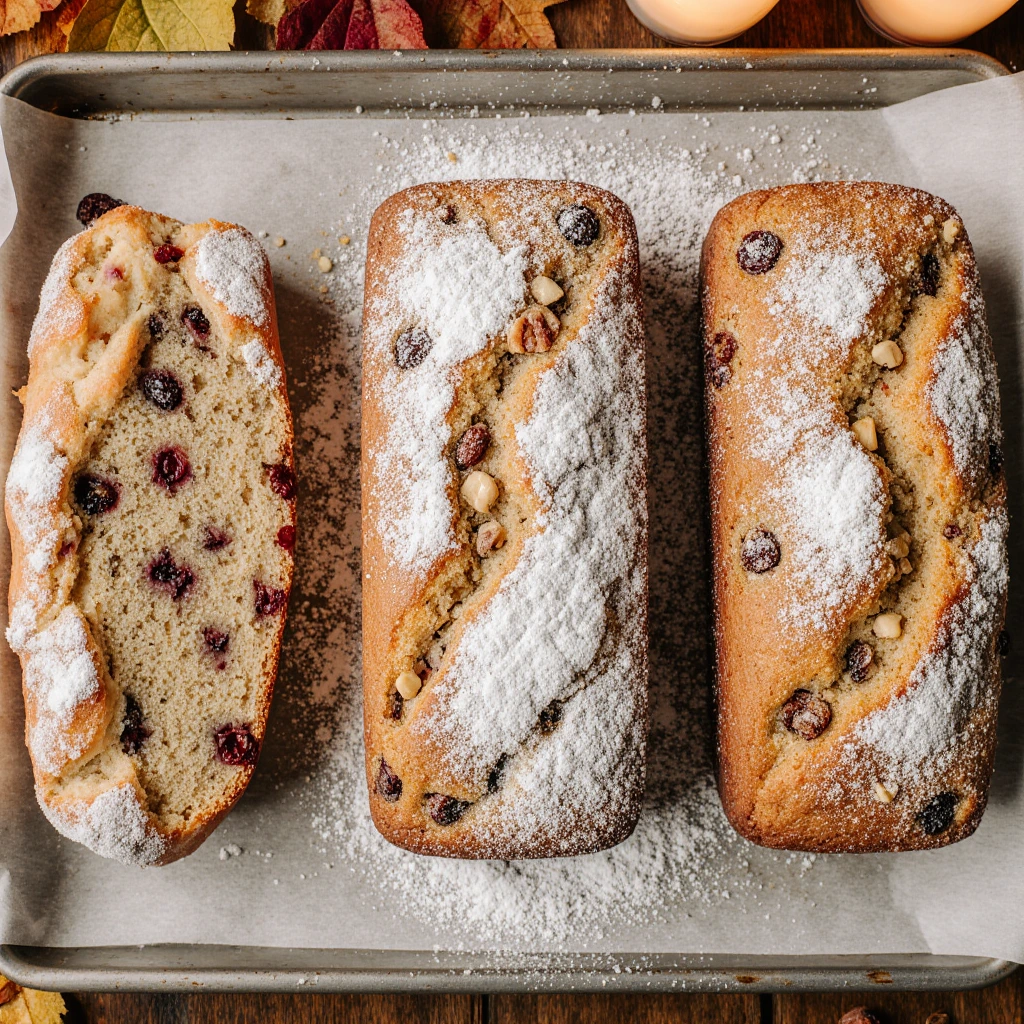
Step 1: Prepare the Fruit Foundation
Begin by combining your dried fruits with rum or brandy in a microwave-safe bowl. Heat for 45 seconds, then allow the mixture to rest while you prepare the dough. This quick-soaking method infuses the fruits with moisture and flavor while saving valuable preparation time. The fruits will absorb the liquid completely, creating concentrated flavor pockets throughout your Thanksgiving fruit bread.
Step 2: Activate the Yeast Base
Warm your milk to precisely 110°F using a kitchen thermometer for optimal yeast activation. Combine the warm milk with yeast in a large measuring cup, whisking gently to dissolve. Allow this mixture to rest for 5-8 minutes until it becomes foamy and fragrant. This visual confirmation ensures your yeast is active and ready to create the perfect bread structure.
Step 3: Build the Dough Structure
In your largest mixing bowl, whisk together flour, sugar, and salt until evenly distributed. Create a well in the center and add the activated yeast mixture, melted butter, and beaten eggs. Using a wooden spoon or dough whisk, combine ingredients until a shaggy dough forms. The mixture will appear rough initially, but proper kneading will transform it into smooth, elastic dough.
Step 4: Develop Gluten Through Kneading
Transfer the dough to a lightly floured surface and knead vigorously for 8-10 minutes. The dough should become smooth, elastic, and slightly tacky but not sticky. Proper gluten development is crucial for achieving the tender yet structured crumb characteristic of quality Thanksgiving fruit bread. If the dough remains too sticky, incorporate flour one tablespoon at a time.
Step 5: First Rise for Flavor Development
Place the kneaded dough in a greased bowl, turning once to coat all surfaces. Cover with a damp kitchen towel and position in a warm, draft-free location. Allow the dough to rise for 60-75 minutes until doubled in size. This extended first rise develops complex flavors and creates the light texture that distinguishes exceptional Thanksgiving fruit bread from dense alternatives.
Step 6: Incorporate Fruits and Aromatics
Gently punch down the risen dough and transfer to a lightly floured surface. Distribute the soaked fruits, chopped almonds, vanilla, cinnamon, and nutmeg evenly over the dough surface. Using gentle folding motions, incorporate the additions without overworking the dough. This technique preserves the delicate gluten structure while ensuring even distribution of flavors.
Step 7: Shape the Traditional Form
Divide the enhanced dough into two equal portions. Roll each portion into an oval approximately 12 inches long and 8 inches wide. If using marzipan, place a 2-ounce log along the center of each oval. Fold the dough lengthwise, slightly off-center, creating the traditional stollen shape. This asymmetrical fold is essential for authentic presentation and ensures even baking.
Step 8: Final Rise and Preparation
Transfer shaped loaves to parchment-lined baking sheets, spacing them at least 4 inches apart. Cover loosely with plastic wrap and allow to rise for 45-60 minutes until noticeably puffed. During the final 15 minutes of rising, preheat your oven to 350°F to ensure optimal baking conditions.
Step 9: Achieve Perfect Baking Results
Bake the Thanksgiving fruit bread for 35-40 minutes until the crust achieves a rich golden-brown color. The internal temperature should reach 190°F when measured with an instant-read thermometer. Rotate the baking sheets halfway through baking to ensure even browning and prevent hot spots from affecting the final texture.
Step 10: Final Finishing Touches
Remove the baked loaves from the oven and immediately brush all surfaces with melted butter while still warm. This step creates the traditional glossy finish and enhances flavor penetration. Generously dust with powdered sugar, allowing some to be absorbed by the warm surface. Cool completely on wire racks before slicing to prevent crumbling.
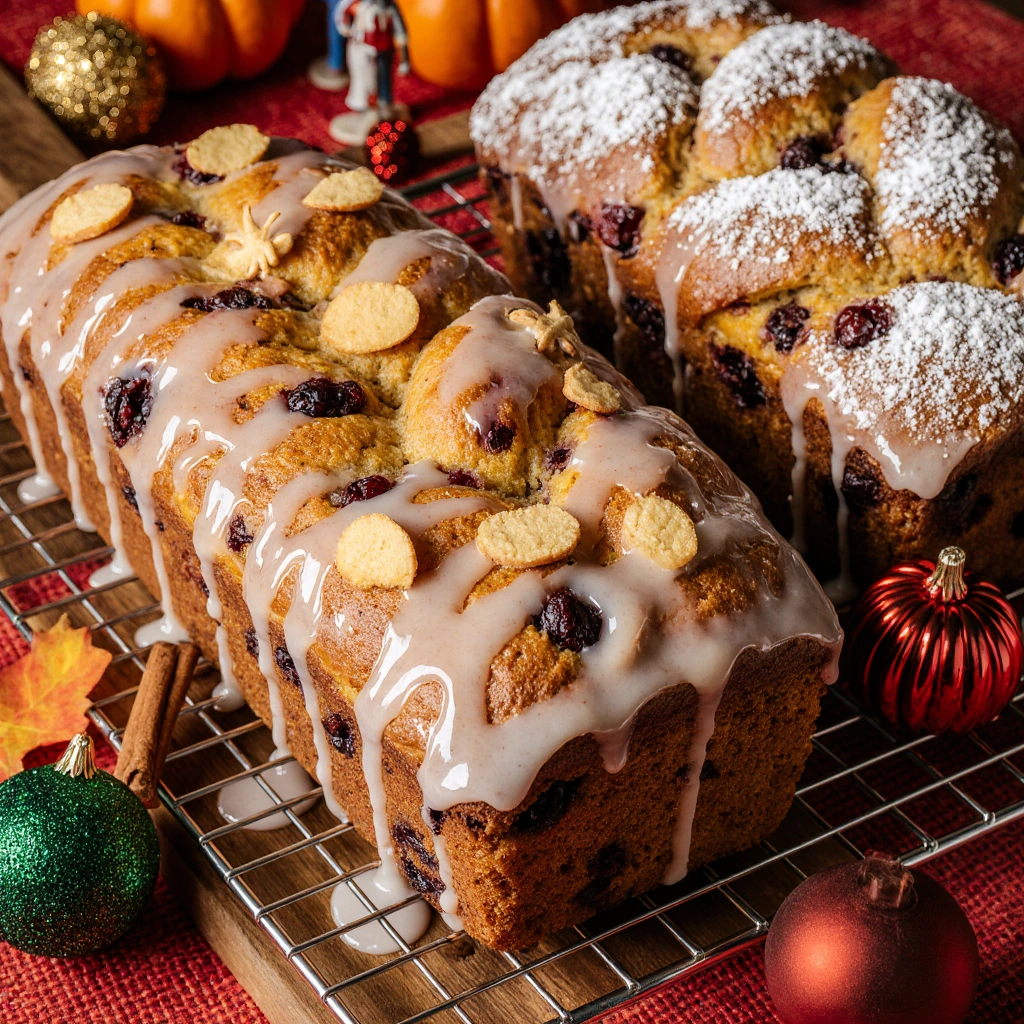
Nutritional Information
Each serving of this Thanksgiving fruit bread (based on 16 servings per recipe) provides:
Macronutrient Profile:
- Calories: 285 per slice
- Total carbohydrates: 52 grams (18% daily value)
- Dietary fiber: 3 grams (12% daily value)
- Protein: 7 grams (14% daily value)
- Total fat: 8 grams (12% daily value)
- Saturated fat: 4 grams (20% daily value)
Essential Micronutrients:
- Iron: 2.1 mg (12% daily value)
- Calcium: 85 mg (8% daily value)
- Vitamin E: 1.8 mg (12% daily value from almonds)
- Potassium: 195 mg (6% daily value from dried fruits)
The dried fruits contribute significant antioxidants, including anthocyanins from cranberries and resveratrol from raisins. The almonds provide healthy monounsaturated fats and vitamin E, while the enriched flour offers essential B vitamins and iron. This nutritional profile makes Thanksgiving fruit bread a more wholesome dessert option compared to traditional cakes or pastries.
Healthier Alternatives for the Recipe
Whole Grain Enhancement: Replace up to half of the all-purpose flour with whole wheat pastry flour to increase fiber content by 40% while maintaining tender texture. White whole wheat flour provides an excellent compromise, offering enhanced nutrition without compromising the delicate crumb structure expected in quality Thanksgiving fruit bread.
Natural Sweetener Substitutions: Substitute coconut sugar or pure maple syrup for granulated sugar to reduce glycemic impact. When using liquid sweeteners, reduce milk by 2 tablespoons to maintain proper dough consistency. These alternatives contribute trace minerals and provide more complex flavor profiles.
Heart-Healthy Fat Modifications: Replace butter with equal amounts of coconut oil or avocado oil for improved fatty acid profiles. Greek yogurt can substitute for half the butter content, reducing calories by 25% while adding protein and probiotics. These modifications create a lighter Thanksgiving fruit bread without sacrificing moisture or flavor.
Protein Enrichment Options: Add 2 tablespoons of ground flaxseed or chia seeds to boost omega-3 fatty acids and protein content. Almond flour can replace up to 1/2 cup of all-purpose flour, increasing protein while contributing subtle nutty flavors that complement the fruit components beautifully.
Serving Suggestions
Traditional Holiday Presentation: Serve thin slices of Thanksgiving fruit bread alongside morning coffee or afternoon tea as part of your Thanksgiving breakfast spread. The bread pairs exceptionally well with artisanal butter, cream cheese, or seasonal preserves. Consider creating a dedicated bread station with various spreads and accompaniments for guest customization.
Elegant Dessert Applications: Transform Thanksgiving fruit bread into sophisticated dessert presentations by serving with vanilla bean ice cream or lightly sweetened whipped cream. A drizzle of warm caramel sauce or seasonal fruit compote elevates the humble bread into restaurant-quality dessert experiences.
Gift-Worthy Packaging: Wrap individual loaves in decorative cellophane with festive ribbons for thoughtful holiday gifts. Include care cards with storage instructions and serving suggestions. This Thanksgiving fruit bread maintains quality for up to one week when properly stored, making it ideal for advance gift preparation.
Creative Breakfast Transformations: Day-old Thanksgiving fruit bread creates exceptional French toast when sliced thick and soaked in vanilla-enhanced custard. The dried fruits caramelize beautifully during cooking, creating a decadent breakfast that rivals any restaurant brunch offering.
Common Mistakes to Avoid
Temperature-Related Pitfalls: The most frequent error involves using milk that is either too hot or too cold for proper yeast activation. Milk temperatures above 120°F will kill the yeast, while temperatures below 100°F result in sluggish fermentation. Investment in an instant-read thermometer eliminates guesswork and ensures consistent results with every batch of Thanksgiving fruit bread.
Ingredient Distribution Challenges: Uneven fruit distribution creates pockets of dense, fruit-heavy areas alongside bland sections. Combat this issue by lightly coating dried fruits with flour before incorporation, which prevents clumping and ensures even distribution throughout the dough structure.
Overbaking Consequences: Extended baking times result in dry, crumbly Thanksgiving fruit bread that lacks the moist, tender crumb that defines quality results. Monitor internal temperature carefully and remove loaves immediately upon reaching 190°F. The bread will continue cooking from residual heat even after removal from the oven.
Rising Environment Errors: Inconsistent rising environments produce unpredictable results. Avoid placing dough near heat sources that create temperature fluctuations. Instead, create consistent rising conditions by placing covered dough in an oven with the light on, providing gentle, steady warmth for optimal fermentation.
Storing Tips for the Recipe
Short-Term Storage Solutions: Properly cooled Thanksgiving fruit bread maintains optimal quality for up to five days when stored at room temperature in airtight containers. Wrap individual loaves in plastic wrap, then place in sealed containers to prevent moisture loss while maintaining the powdered sugar coating.
Extended Preservation Methods: For longer storage, wrap completely cooled loaves in plastic wrap followed by aluminum foil, then freeze for up to three months. This double-wrapping technique prevents freezer burn while preserving the delicate flavors and textures that make Thanksgiving fruit bread special.
Optimal Thawing Procedures: Thaw frozen Thanksgiving fruit bread overnight in the refrigerator while still wrapped to prevent condensation from affecting texture. Allow to reach room temperature before serving, or warm briefly in a 300°F oven for 5-10 minutes to restore fresh-baked appeal.
Make-Ahead Preparation Strategies: The fruit soaking process can be completed up to one week in advance, with covered fruit mixtures stored in the refrigerator. Shaped, unbaked loaves can be covered and refrigerated overnight, then allowed to complete their final rise at room temperature before baking.
Conclusion
This Thanksgiving fruit bread recipe successfully transforms traditional German stollen into an accessible holiday centerpiece that busy families can master without compromising authentic flavors or textures. The streamlined approach reduces preparation time while delivering the rich, aromatic qualities that make this bread a memorable addition to any Thanksgiving celebration.
Call-to-Action: Try this Thanksgiving fruit bread recipe and share your results in our review section below. Subscribe to our newsletter for more holiday baking inspiration and seasonal recipe updates that will enhance your celebration throughout the year.
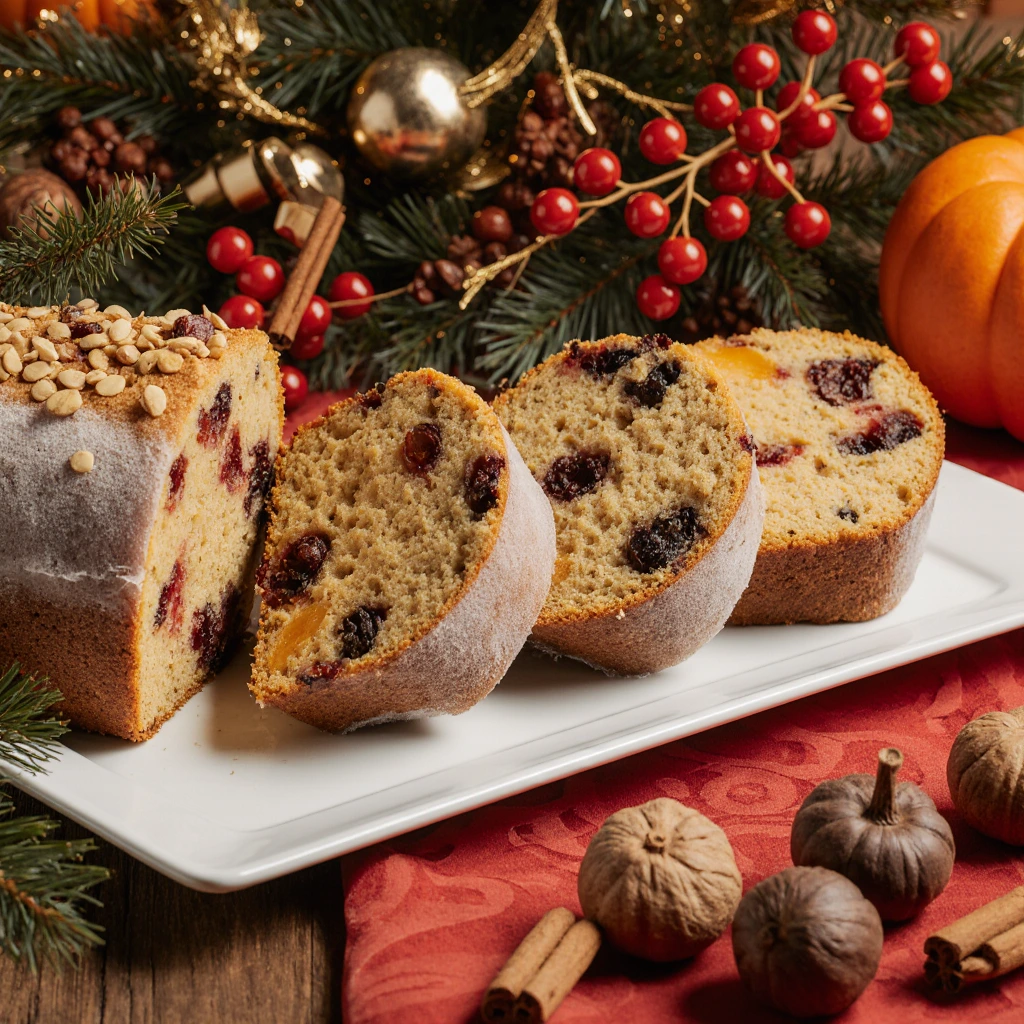
FAQs
Can I prepare this Thanksgiving fruit bread without alcohol? Absolutely. Replace the rum or brandy with an equal amount of apple juice, orange juice, or additional milk. The fruit will still absorb moisture and flavor, though the depth of flavor will be slightly different. Many bakers prefer alcohol-free versions for family gatherings, and the results remain delicious and authentic.
How do I know when my Thanksgiving fruit bread is properly baked? The most reliable indicator is internal temperature, which should reach 190°F when measured with an instant-read thermometer inserted into the center of the loaf. Visually, the crust should be golden brown, and the bread should sound hollow when tapped on the bottom. Overbaking creates dry texture, so monitor carefully during the final minutes.
What causes dense, heavy Thanksgiving fruit bread? Dense results typically stem from insufficient kneading, inactive yeast, or too much flour incorporation during mixing. Ensure your yeast is fresh and properly activated, knead until the dough becomes smooth and elastic, and measure flour accurately using the spoon-and-level method rather than scooping directly from the container.
Can I make this recipe gluten-free? Yes, though the texture will differ from traditional versions. Use a high-quality gluten-free flour blend designed for yeast breads, and add 1 teaspoon of xanthan gum if not included in your flour blend. The rising times may be shorter, and the final texture will be more delicate than wheat-based versions.
How far in advance can I make Thanksgiving fruit bread? This bread actually improves in flavor after 24-48 hours as the fruits and spices meld throughout the crumb. Bake up to three days before serving for optimal flavor development, or freeze baked loaves up to three months in advance. The make-ahead friendly nature makes it perfect for holiday meal planning.
End your meal on a sweet note with one of our irresistible(desserts), from classic treats to unique creations.


